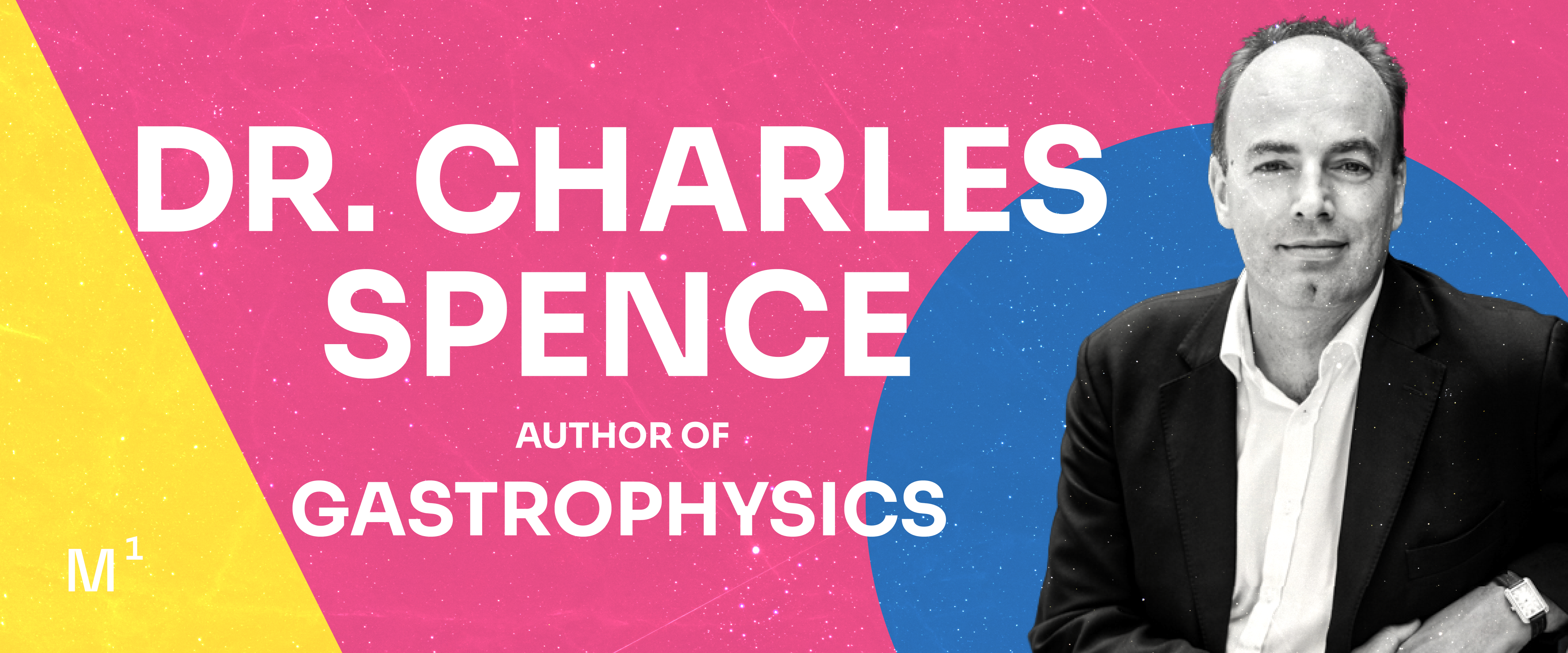
Straight from CBL: How Sensory Triggers Transform Flavor
Method1's Straight from CBL series features highlights from the “Behavioral Science for Brands” podcast from the Consumer Behavior Lab (CBL), hosted by Method1 Founder and President MichaelAaron Flicker and Senior Behavioral Science Partner Richard Shotton. Seeking to make a better industry, CBL is a premier authority on human behavior in marketing, uncovering the insights behind brands, campaigns and the behavioral science that drives them. At Method1, we put CBL's insights into practice—making indulgence brands that deserve to be experienced irresistible.
Think your indulgence brand's flavor problem is a challenge for the lab—and more costly R&D? Maybe it’s time to design for more than one sense.
Faced with slow sales, CPG and spirits marketers often chase reformulation and obsess over ingredients. But there's an overlooked set of flavor enhancers and decision triggers hiding in plain sight. The curve of your chocolate. The weight of your bottle. The resistance of your cap.
In Episode 60 of Behavioral Science for Brands, MichaelAaron Flicker and Richard Shotton interview Dr. Charles Spence, Oxford professor of experimental psychology, who reveals how multisensory design transforms what we taste.
As Dr. Spence puts it, “We all think we're in control and can perceive directly. All the research says that's not the case.”
An accidental flavor experiment by Cadbury offers the perfect demonstration.
Cadbury rounded the edges of their chocolates—nothing else—and British consumers revolted. "Too sweet!" they complained. "You've ruined it!" Mondelez insisted they hadn't touched the formula. And both were right. Our brains just (stubbornly) associate round shapes with sweetness and angular shapes with bitterness.
The phenomenon isn't limited to shapes; a product’s weight triggers perceptions of higher quality. A heavier bottle literally makes whiskey taste smoother. And that satisfying pop as consumers open your packaging? It's priming every taste bud for an irresistibly premium indulgence.
Consider this question as you review the excerpt below: What multisensory moves could sweeten your brand's appeal—without a single ingredient switch?
PODCAST EXCERPT
The Behavioral Science for Brands podcast from the Consumer Behavior Lab
Episode 60: Interview with Dr. Charles Spence on multisensory perception and flavor
Note: Transcript edited for brevity and clarity
Speakers: Dr. Charles Spence (CS), Richard Shotton (RS)
CS: I used to do a lot of work with Dominique Persoone, who's a Michelin star chocolatier to the Rolling Stones and has a rock and roll chocolatier in Belgium. He's got chocolate shops, and we were doing experiments in his shops, playing music and changing the shape of the chocolates.
We found that people associate sweet tastes with round shapes and angular shapes with bitter tastes. We tested that in his chocolate shop with real customers. Make the chocolate rounder, and people will—under certain conditions—say it tastes sweeter.
So we came out in 2013 with a paper saying: if you want to make your chocolate sweeter as a company, you could reduce the sugar content while keeping the [perception of] sweetness the same, simply by rounding off the edges of your chocolate pieces.
The next year—whether or not they read my article, I don't know—Cadbury comes out with a new rounded Dairy Milk chocolate bar. And then the Daily Mail readers are up in arms because this North American company, Mondelez, has now taken over British Cadbury's and they're messing with the formula. They say, "What have you done? You're messing with our chocolate. Put it back the way it was."
"What don't you like?"
"It's too creamy and sweet."
And then you have the Mondelez people say, "No, we haven't touched the formula at all. All we've done is change the shape." And if sugar wasn't so cheap, they could have even reduced the sugar and changed the shape to keep the perception the same.
You can see many other chocolate companies now starting to round off their products. They probably don't want to have a discussion with the consumer about sugar content. But behind the scenes, I sort of know what's going on here. This all makes sense.
RS: Do you have a hypothesis about why roundness is associated with sweetness?
CS: Oh, I've got lots of speculations. We've done experiments where we give people equally intense solutions of bitter, sweet, salty, sour and umami, just the basic tastes. And we say, “Just [describe] your experience over time.”
And what you find is that with sweetness, people will describe their experiences coming on gradually, sort of lingering and then fading gently. Kind of a very rounded temporal profile, if you will. Give somebody an equally intense sour solution of citric acid, and it's up and down, very pointy, it's right on and then it's gone. No surprise then that citric acid or acidity or sourness is matched to angularity, spikiness—while sweetness is matched to round.
RS: The other area I found absolutely fascinating are those associations starting to become self-fulfilling prophecies. You mentioned in [your book] Sense Hacking around Bang and Olufsen using much heavier remote controls than they need to be because there's an association between heaviness and high quality. Is that something you see in areas beyond high-fi? Do you see that with food and cutlery?
CS: All over the place. So, we've done experiments with cutlery in Scottish high-end restaurants where half the tables have cutlery that is light, canteen, cheap and nasty stuff. The other half of the tables, eating the same food the same day in the same place, will have very heavy cutlery. And they'll rate the food as significantly more valuable. They’re willing to pay significantly more for exactly the same food, simply because they're holding something heavy in their hands.
We've seen it when we've done studies with adding a weight to the bottom of a can of cola. We’ll say, “Please take this cola, open the can, take a slurp, tell us what you think.” And that little 30-gram weight underneath the can makes it taste better. Same thing with boxes of chocolates. Same thing with yogurt pots. Same thing with bottles of wine.
There's some intuitive understanding of this in some sectors. When you go to wine conferences, some of the new world wine producers—if they've got a reserve bottling or a special thing—they will deliberately put it in a heavier bottle.
And so we see it again and again, wherever we look. We all think we're sort of in control and can perceive directly. All the research says that's not the case.
To hear more about multisensory marketing and flavor perception, listen to Episode 60 of The Behavioral Science for Brands Podcast in its entirety here.
To see behavioral principles in action making indulgence brands irresistible, explore Method1’s work.
Ready to
make your brand
irresistible?
